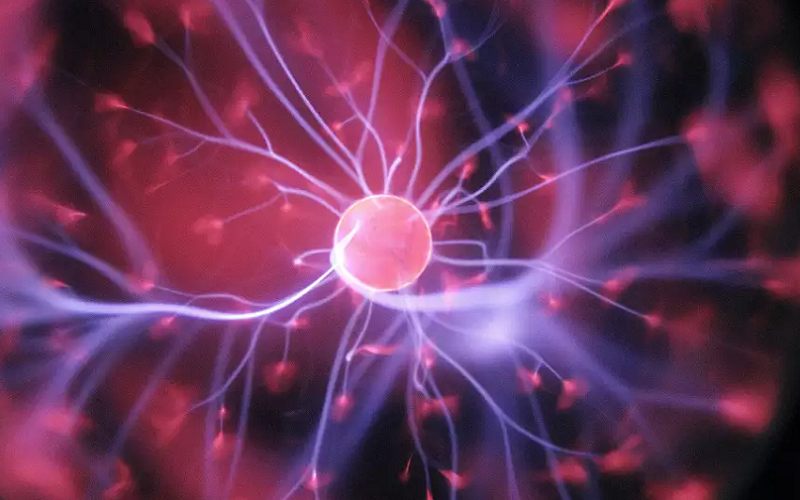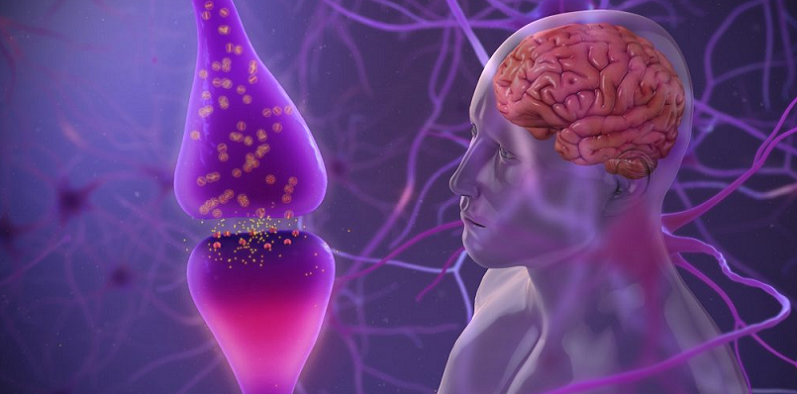
Hormones, the silent messengers coursing through our bloodstream, play vital roles in orchestrating myriad bodily processes. Often, we associate them with growth, metabolism, or mood regulation. Yet, beyond these commonly understood functions, some hormones cloak additional capabilities. Enter the Vasoactive Intestinal Peptide, or VIP, a hormone primarily known for its regulatory duties in our gastrointestinal system. But could this humble peptide also play a pivotal role in safeguarding our brain’s health?
Contents
- Background on Vasoactive Intestinal Peptide (VIP)
- The Neuroprotective Potential of VIP
- VIP in Relation to Neurodegenerative Diseases
- References
Background on Vasoactive Intestinal Peptide (VIP)
Before delving into the intricate roles VIP might play in our brain’s health, it’s essential to understand its origins, discovery, and primary functions. This foundational knowledge will provide context to appreciate the vast potential this peptide might have beyond its established roles.
History and Discovery of Vasoactive Intestinal Peptide (VIP)
VIP was first identified in the early 1970s by Sami Said and Victor Mutt when they were investigating vasoactive agents in the porcine intestine. Their studies unveiled a peptide that showcased a profound ability to stimulate intestinal smooth muscle relaxation and vasodilation, hence the name “Vasoactive Intestinal Peptide.” Over the years, further research has provided insights into its multifaceted nature, revealing a diverse range of functions across various body systems.
Primary Functions in the Gastrointestinal System
As its name suggests, the primary functions of VIP were first documented in the gastrointestinal (GI) system. In the GI tract, VIP acts as a neuromodulator and neurotransmitter. Some of its key roles include:
Smooth Muscle Relaxation
VIP helps to relax the smooth muscle tissue in the walls of the intestines, thereby assisting in regulating the motility and flow of intestinal contents.
Stimulation of Pancreatic Secretions
The peptide encourages the pancreas to release water and bicarbonate, facilitating digestion and neutralizing stomach acids as they enter the small intestine.
Inhibition of Gastric Acid Secretion
VIP plays a counterbalancing role by inhibiting the release of stomach acids, ensuring that the acidic environment in the stomach is finely tuned for digestion [1].
Lesser Known Roles in Other Body Systems
Beyond the confines of the digestive tract, VIP is a peptide with a surprising repertoire of actions in other body systems.
Vasodilation
In the cardiovascular system, VIP acts as a potent vasodilator, expanding blood vessels and improving blood flow, especially in the coronary and cerebral arteries.
Bronchodilation
Within the respiratory system, VIP can induce bronchodilation, making it easier to breathe by expanding the airways.
Regulation of Circadian Rhythms
In the suprachiasmatic nucleus of the brain, which is considered the body’s central clock, VIP helps synchronize our internal rhythms with the external environment.
Modulation of Immune Responses
Research has also shown that VIP plays a role in the immune system by influencing the activity of various immune cells, acting as both an immunostimulant and immunosuppressant, depending on the context [2].

The Neuroprotective Potential of VIP
The versatile nature of Vasoactive Intestinal Peptide (VIP) in regulating various body functions leads us to an intriguing question: could this peptide play an instrumental role in the health and well-being of our brain?
VIP Receptors in the Brain
The brain, an organ of immense complexity, houses a vast network of receptors that interact with numerous molecules. Among these receptors, VIP finds its distinct docking stations, primarily known as VPAC1 and VPAC2 receptors.
VPAC1 and VPAC2 Receptors
These receptors are part of the family of G-protein-coupled receptors (GPCRs). While VPAC1 receptors are distributed throughout various tissues in the body, including the brain, VPAC2 receptors are more specifically concentrated within the central nervous system. Their activation by VIP triggers a cascade of intracellular events that can influence neuronal function and health [3].
Distribution and Locations in the Brain
VIP receptors, particularly VPAC2, are predominantly found in the suprachiasmatic nucleus, hippocampus, and cortex. Their distribution suggests potential roles in regulating circadian rhythms, memory formation, and higher cognitive functions.
VIP’s Role in Reducing Neuroinflammation
Neuroinflammation, an overactive inflammatory response in the brain, has been linked to several neurodegenerative diseases. The ability of a molecule to modulate this inflammation could have profound implications for brain health.
Counteraction Against Pro-inflammatory Agents
Studies have shown that VIP can counteract the effects of various pro-inflammatory cytokines, such as TNF-alpha and IL-6. By doing so, it can potentially reduce the inflammation-driven damage in neuronal tissues.
Promotion of Anti-inflammatory Pathways
Beyond its antagonistic role against pro-inflammatory agents, VIP also promotes anti-inflammatory pathways. It encourages the release of anti-inflammatory cytokines like IL-10, fostering an environment conducive to neuronal recovery and survival [4].
Support for Neuronal Survival and Growth
Protecting neurons from damage is one thing, but supporting their growth and survival is another critical aspect of neuroprotection.
Role in Neuronal Differentiation and Proliferation
VIP has been found to promote the differentiation of neural stem cells into mature neurons. This property could have therapeutic potential, especially in conditions where neuronal loss is significant.
Inhibition of Apoptotic Pathways in Neurons
Apoptosis, or programmed cell death, is a natural process that can go awry under certain conditions, leading to premature neuronal death. VIP exhibits properties that inhibit these apoptotic pathways, thereby enhancing the survival rate of neurons.

VIP in Relation to Neurodegenerative Diseases
Neurodegenerative diseases are a group of disorders characterized by the progressive degeneration or death of nerve cells, or neurons. They present one of the most significant challenges in modern medicine due to their debilitating nature and lack of curative treatments. Given the neuroprotective potential of VIP, it’s intriguing to explore how this peptide could interact with or influence the progression of these diseases.
Alzheimer’s Disease
Alzheimer’s disease (AD) is the most common form of dementia, marked by memory loss, cognitive decline, and the accumulation of amyloid-beta plaques and tau tangles in the brain.
Reduction of Amyloid-Beta Accumulation
One of the hallmark features of Alzheimer’s is the buildup of amyloid-beta plaques in the brain. Preliminary studies have suggested that VIP might play a role in reducing this accumulation. While the exact mechanism remains under investigation, there’s optimism that VIP’s modulatory effects on neuroinflammation could be a factor [5].
Improvement of Cognitive Function in Pre-clinical Studies
In animal models of Alzheimer’s, treatments involving VIP have shown potential improvements in cognitive function. Rats and mice treated with VIP showed enhanced memory retrieval and reduced cognitive deficits, providing a promising avenue for further research in human subjects.
Parkinson’s Disease
Parkinson’s disease (PD) primarily affects dopamine-producing neurons, leading to tremors, rigidity, and bradykinesia. Given VIP’s broad range of neuroprotective actions, there’s growing interest in understanding its potential impact on this condition.
Protective Effects on Dopaminergic Neurons
Dopaminergic neurons, primarily affected in PD, might benefit from VIP’s anti-apoptotic properties. In certain laboratory settings, VIP has demonstrated potential in protecting these neurons from various harmful stimuli, hinting at its possible therapeutic value in PD.
Potential to Reduce Motor Dysfunction
Pre-clinical studies on animal models of Parkinson’s have also indicated that VIP treatment can lead to a reduction in motor dysfunction, a primary symptom of PD. While these results are promising, more extensive clinical trials in humans are needed to validate these findings.
Other Neurodegenerative Conditions
While Alzheimer’s and Parkinson’s are among the most studied in relation to VIP, the peptide’s potential doesn’t stop there.
Potential Role in Multiple Sclerosis, Huntington’s, and More
Other neurodegenerative diseases, such as Multiple Sclerosis (MS) and Huntington’s Disease, also exhibit neuroinflammatory components. Given VIP’s known effects on inflammation, it’s plausible that it could offer therapeutic benefits in these conditions. Early-stage research is exploring these possibilities, and while definitive conclusions are yet to be drawn, the initial outlook is hopeful.
Ongoing Research and Findings
Across the spectrum of neurodegenerative diseases, research into VIP’s potential benefits is ongoing. Every year, new studies and trials add to our understanding, painting a clearer picture of where VIP stands in the fight against these conditions.
References
[1] A Synthetic Agonist to Vasoactive Intestinal Peptide Receptor-2
[2] Neuroprotective effect of vasoactive intestinal peptide (VIP)
[3] From vasoactive intestinal peptide (VIP) through activity-dependent neuroprotective protein (ADNP) to NAP
[4] Neurotrophic Effects of the Peptide NAP
[5] Vasoactive intestinal polypeptide plasma levels associated with affective symptoms
